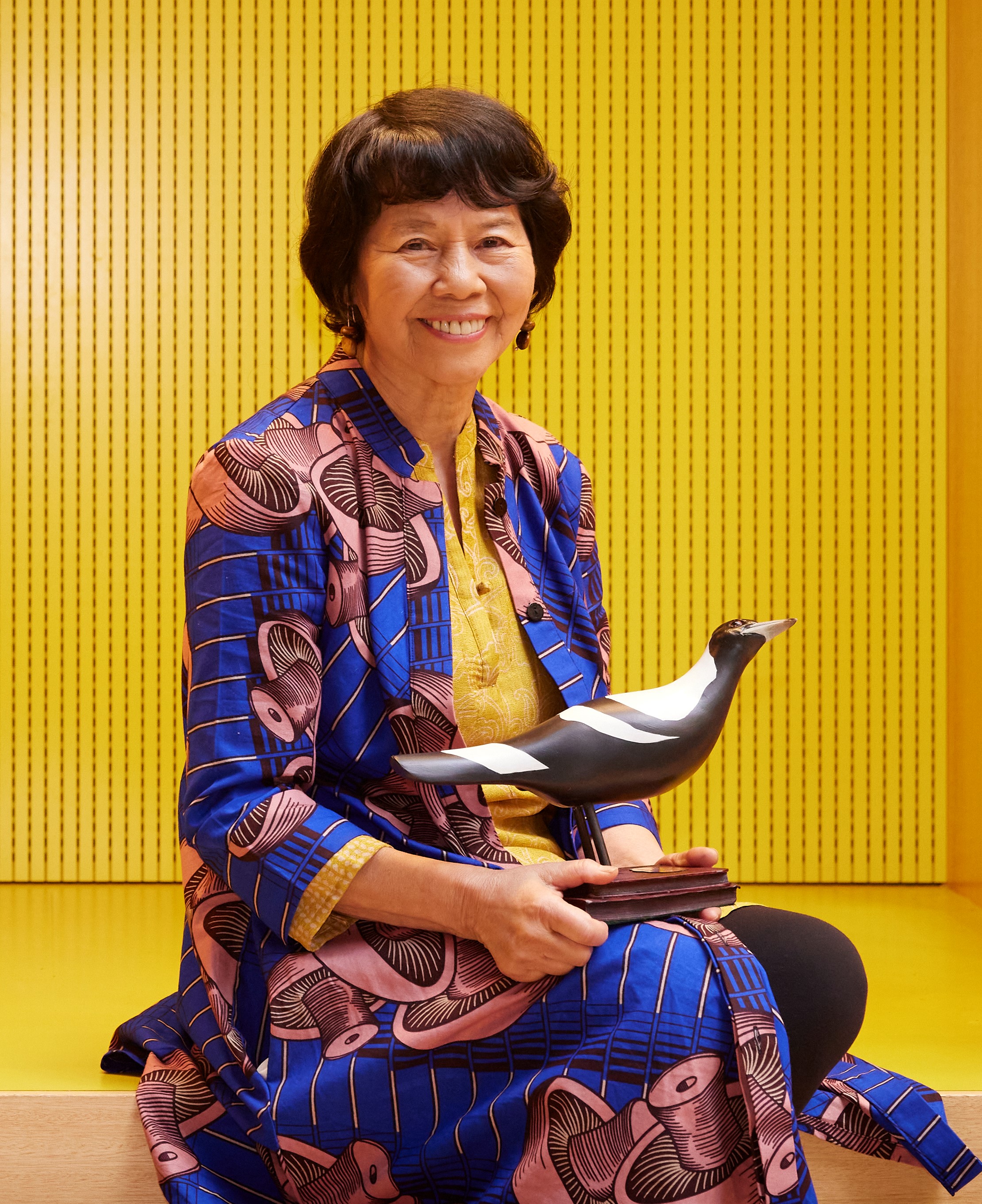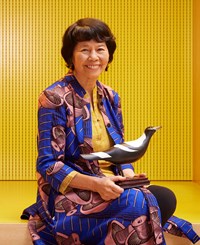Issue 122
Term 3 2022
Interview with Gabrielle Wang, Australian Children's Laureate
Gabrielle Wang shares her fond memories of libraries, librarians, and speaks about the importance of reading in tackling racism.
Were school libraries an important part of your childhood? Do you have any favourite memories?
School libraries were important because I felt they were a good shelter. I liked playing sport and I liked being outside at lunchtime, but sometimes if you just want quiet time, it’s a really good place to be. And I always remember where titles by my favourite authors were kept in the shelves. I was a very slow reader, so I sort of stuck to my favourites.
In Year 12 I was appointed a senior school librarian. There were four of us, and we would help the librarian catalogue and cover books and help when students came to take books out. So yes, I have very fond memories of my school library.

Gabrielle Wang, Australian Children's Laureate
Because there was so much racial prejudice around during the time when I was young – though not at school – I was always aware of which places were safe. The library was a safe place to be, the Art Room was a safe place because that’s what I loved.
What I’m so saddened to hear is that libraries are closing down, and all the books are going into individual classrooms. The library is the heartbeat of a school. That’s the central point of all schools and a beautiful meeting place.
Have you encountered particularly memorable ways in which teachers and school librarians have engaged students with literature?
There’s this one memory of when my daughter was in Year 6. She had one of those incredible teachers – I think we all have a teacher we’ll never forget because they had such an impact on our lives. He was one of the teachers who have a unique teaching style. I was helping out in the library and he brought his students in and he grabbed a book off the shelf, just seemingly at random. And it had this really old-fashioned cover – it was grey and not a good cover at all – and he just did this incredible spiel. He sold the book so well that by the end of his five-minute rave he said, ‘Who wants to borrow it?’ and every single person wanted to borrow it. This is what’s so fantastic about having teacher librarians who know their books and can sell the books to everybody, or just to an appropriate student, to suit the student’s needs.
The theme you’ve adopted for your time as Children’s Laureate is ‘Imagine a story’, and you emphasise the importance of children exercising their imaginations. Do you have any advice for teachers who want to extend students’ imaginations in their classrooms?
For teachers, reading aloud a class text is a fantastic thing, because even slow readers or children who have reading difficulties can enjoy the book as well. If it’s a book with a female protagonist, boys can also enjoy it. I know from first-hand experience that this happens with my books. All my novels have female protagonists, but when teacher librarians read my books out loud in co-ed schools, the boys are just as excited because it’s an exciting read.
Maybe the teacher can read out a few chapters then set the students questions, for example: What do they think will happen next in the story? What do you think will happen to the characters? Get them to use their imaginations.
Once the book is finished, teachers could ask the students to write a few paragraphs on what happened before or after the story in the novel as the story isn’t isolated in the novel’s time frame; there is a backstory and there is an after story. The students could write a few paragraphs about what happened before the story began in the style of the author, for example, first person, present tense. Or after the story finishes, students could explain what happened to the character in the following ten years.
I also think using visual literacy is important. A teacher could use works of art, a Frederick McCubbin painting for example, where there is a scene, and without telling the students the name of the painting, the teacher could ask what’s happening in the painting. Who are the characters? No answer is incorrect. They’re using their imaginations to think about and go inside the characters.
Students can then write a short story from the perspective of someone in the painting. This is a good exercise to get inside the heads of the characters to feel how they feel and see what they see, because that’s what we do all the time as authors. We get inside the heads of our characters. And that’s how we tell our stories.
In an interview with SBS you describe your shock at discovering that many children aren’t happy being Asian in contemporary Australian society, and you note that Australia has experienced waves of anti-Asian sentiment since the mid-19th century. Do you think you can address racism in your role as Children’s Laureate? Are there ways in which literature can play a part?
I think it’s very important to encourage children to read stories about other cultures. Reading is the only creative art form where you are actually inside the head of the main character. So, you can feel how they feel and if they’re not of your colour or not of your culture, then you can feel how they feel, like when somebody taunts them or treats them badly or bullies them. And that’s a powerful tool if you’re reading. So I would encourage teachers and teacher librarians to give students books about other cultures, especially by diverse authors.
Every year school library staff are invited to participate in the Educational Lending Right School Library Survey (ELR). The survey is part of a process that determines how much recompense authors and publishers receive for revenue lost because their books are available for free in school libraries. How important are ELR payments to Australian authors, and what are the benefits of receiving them?
Well, according to the 2020 Australian Society of Authors Survey, 80 per cent of authors and illustrators (probably more than that) receive an average yearly income of $15,000, so how important is ELR to us?
The last few years have been bad for us because as children’s authors and illustrators, we go around to schools and we talk about books, and that forms a large part of our income. In the last two years especially, we haven’t been able to do that.
PLR (Public Lending Right) and ELR are vitally important as authors and creators have continued to receive ELR payments in the last few years as their books have been held in school libraries, so it’s important that school library staff participate in the ELR survey so authors and publishers can get what they deserve.
Finally, you note that you want to give children a sense of belonging, a sense of who they are. Do you believe that immersing students in literature can achieve this?
Absolutely. I’m going to read an email that I received a couple of weeks ago that blew me away and will answer this question.
‘Hi, I’m 16, so probably way older than the demographic that you’re usually contacted by. I just remembered how important your books were to me as a fellow Chinese-Australian kid who got bullied for that heritage. My school librarian introduced me to your books, and reading about characters that looked like me was so important to me growing up, so I just wanted to thank you for that. Because of you and your characters and your stories, I knew it wasn’t bad to be Chinese in the hardest of times, and that our culture is beautiful. I loved A ghost in my suitcase, The pearl of Tiger Bay, The garden of Empress Cassia and Our Australian girl: the Pearlie stories books very much as a kid. And I still do. I reread them to this day.
Sincerely, Rachel (a fellow Chinese-Australian girl).’
